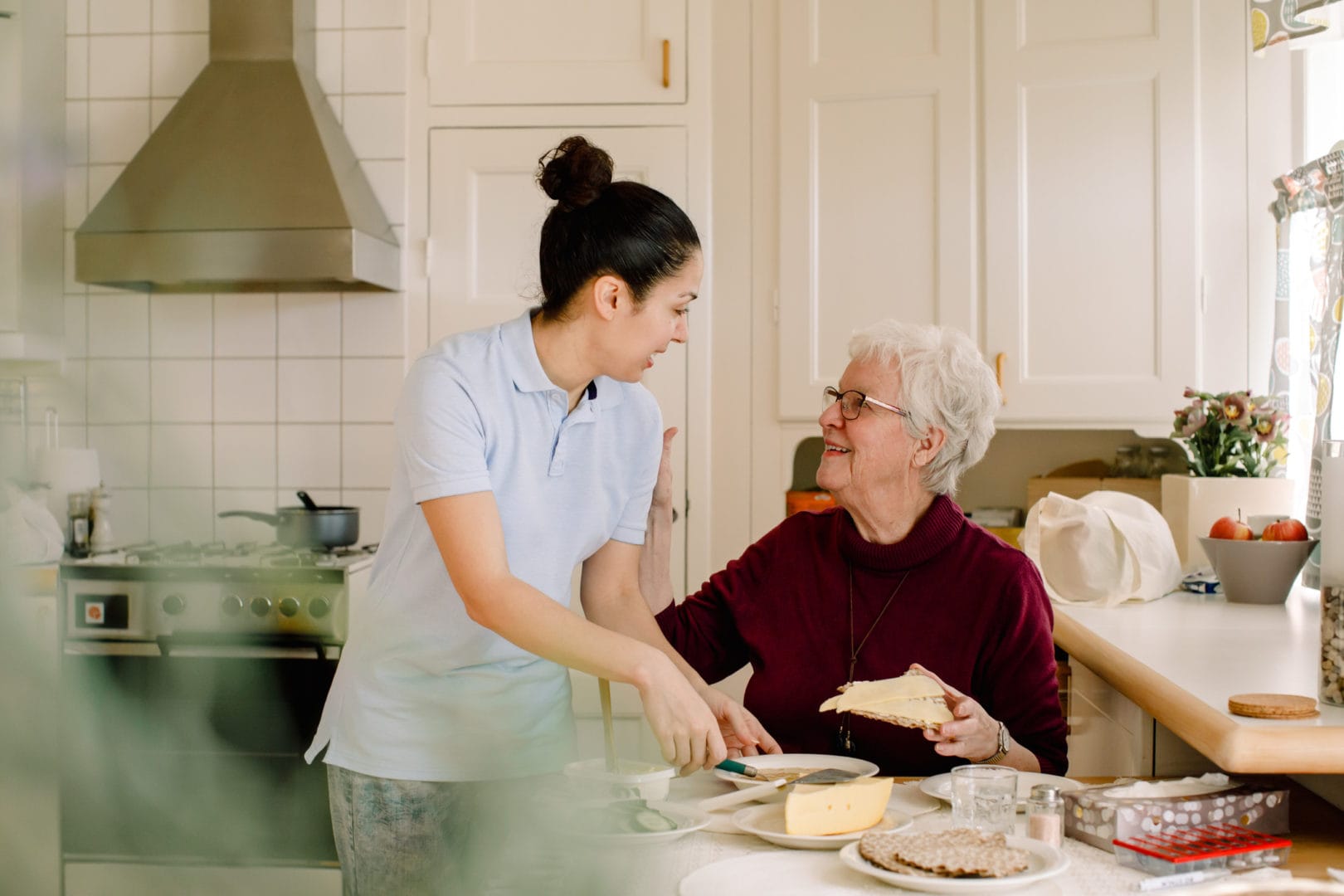Caring for a senior — either as a family member or paid provider — can be a rewarding experience, but it can also be overwhelming at times. According to a 2023 survey by AARP, half of senior caregivers report increased emotional stress as a result of their caretaking work. One way to combat caregiving stress is to have a plan for each day — a checklist that can help break down your daily caregiving tasks into smaller, more predictable chunks.
“For the care provider, a checklist can organize their responsibilities, making their workload more manageable,” says Dr. Brittany Ferri, an occupational therapist with the National Council on Aging.
Reduced stress levels aren’t the only benefits of caregiver checklists. They can also help create positive routines for the seniors you care for and make your work more effective. Here’s what to include on your checklist for the best results, as well as a senior caregiver daily checklist template to help you get started.
Benefits of a checklist for caregivers
So, why should you consider making a daily caregiver checklist for the person you care for? The benefits are numerous, according to the experts we spoke to. Here are some of the advantages of having a daily checklist.
More effective care
Christopher Norman, a geriatric nurse practitioner at the National Council on Aging, says having a daily caregiver checklist is an important tool for increasing overall efficiency of care. Daily checklists ensure that you manage your time more efficiently so that all your daily tasks are completed, Norman explains.
“Checklists serve as a reminder of daily tasks, decreasing the chance of overlooking important aspects of medical management.”
— Dr. Brittany Ferri, occupational therapist with the National Council on Aging
Fewer mistakes
Creating a daily checklist helps ensure that you’re able to provide thorough and error-free care, Ferri says. “Checklists serve as a reminder of daily tasks, decreasing the chance of overlooking important aspects of medical management.”
Besides ensuring that the senior you care for takes their medication daily, a checklist can also ensure other necessary tasks are performed, such as bathing, wound changing and diabetes management.
Creates positive routines
Understanding what you need to accomplish each day can help you come up with a daily routine for yourself and for the person you care for. Many people thrive on routine, and routines can be especially important as we age. “For seniors, a consistent routine can also lessen anxiety and confusion, particularly for those with cognitive impairments,” Norman says.
Helps keep the home well stocked
“By preparing a daily checklist, you will know what to anticipate for the day and make sure you have enough supplies for the care you are providing,” says Jennifer Drake, an account executive at the United Disabilities Services Foundation. By seeing the daily checklist, you can anticipate your needs for the coming days, ensuring that the senior’s home is well-stocked with food, toiletries, incontinence supplies, medications and any other necessary supplies.
Join Care for free
What to include in a checklist for caregivers
The types of senior care tasks you should include on your checklist will depend on the needs are of the senior you care for, as each senior has different physical, medical, home care and emotional needs. According to Norman, a well-rounded caregiver checklist should include the following categories:
- Medication management.
- Feeding planning and preparation.
- Regular schedules for bathing, dental care and other hygiene needs.
- Exercise routines appropriate for the senior’s health and mobility.
- Social interaction and hobbies.
- Home maintenance, including housework and keeping the space safe.
- Any other tasks specific to the senior’s health needs (blood pressure readings, feeding tube administration, help with mobility, etc.).
Read more:
How to create your own caregiver daily checklist
“Start by talking with the senior and their healthcare team to customize the checklist to their specific needs,” Norman says. “Determine priorities based on what’s most important for the senior’s health and well-being.” Here are some key tips to keep in mind when creating your own caregiver checklist.
Organizing the list
There are several different ways to organize the list. Many people organize it by categories, listing the most important categories first. Others might choose to organize it based on the daily routine of the person they are caring for.
“If it is important for them to take their medication as soon as they get up, make that first on the list,” Drake suggests. “If they prefer to get bathed first thing in the morning, start your list with hygiene tasks.” Keep in mind, too, that what is prioritized might change based on how the day is going or as the person’s needs change.
Formatting the list
There are several different format options for the list, too, including having a digital list (on a phone, tablet or computer) or having a paper list. You can have one or both, and it all depends on your preferences and needs.
“Digital checklists can be great for sharing updates with others and can be easily modified,” says Ferri. “Paper checklists are great for those who need a more visible reminder.” If you have lists in both digital and paper form, just make sure they match and are updated at the same time, so that all the people caring for the senior are on the same page and so that no tasks are missed or duplicated.
“Determine priorities based on what’s most important for the senior’s health and well-being.”
—Christopher Norman, geriatric nurse practitioner at the National Council on Aging
Senior caregiver daily checklist template
The following is a senior caregiver checklist template for inspiration and to give you a sense of how to organize your list and what to include:
Personal Hygiene
- Help with showering, bathing and/or sponge baths.
- Help with shampooing.
- Grooming aid, such as nail clipping and shaving.
- Skin care, including applying lotions.
- Oral care, including tooth brushing assistance and denture care.
- Assistance with getting dressed and undressed.
Toileting
- Hygiene during and after toileting.
- Diapering.
- Chux pad changing.
- Colostomy care.
- Catheter care.
Feeding and nutrition
- Meal preparation.
- Meal set up.
- Assistance with feeding.
- Tube feeding and care.
Medication
- Organizing daily medications.
- Medication reminders.
- Preparation of insulin.
Mobility
- Assistance walking.
- Assistance getting in and out of bed.
- Assistance with mobility and strengthening exercises.
Housekeeping
- Laundry.
- Cleaning bathrooms.
- Cleaning the kitchen.
- Sweeping and mopping floors.
- Vacuuming.
- Dusting.
- Changing linens.
- Decluttering.
Other health tasks
- Assistance with wound dressing.
- Monitoring blood pressure and blood glucose.
- Assistance with nasal sprays.
- Assistance with nebulizers.
- Assistance with oxygen administration.
Other daily living tasks
- Grocery shopping.
- Running errands.
- Renewing medications.
- Ensuring other household supplies are well stocked.
- Accompanying to medical appointments.
- Managing finances.
The bottom line
Having a daily caregiver checklist can alleviate many of the stressors that come with being a caregiver to a senior. It can make you more efficient, reduce errors and help create a more predictable routine for both you and the person you care for.
It’s important to keep in mind that each senior is unique, and you should create your list around that particular person’s needs, remembering that these needs may change from day to day and over time. If you need further assistance in creating a daily caregiver checklist, check in with the senior themselves, their family members or their healthcare team.





